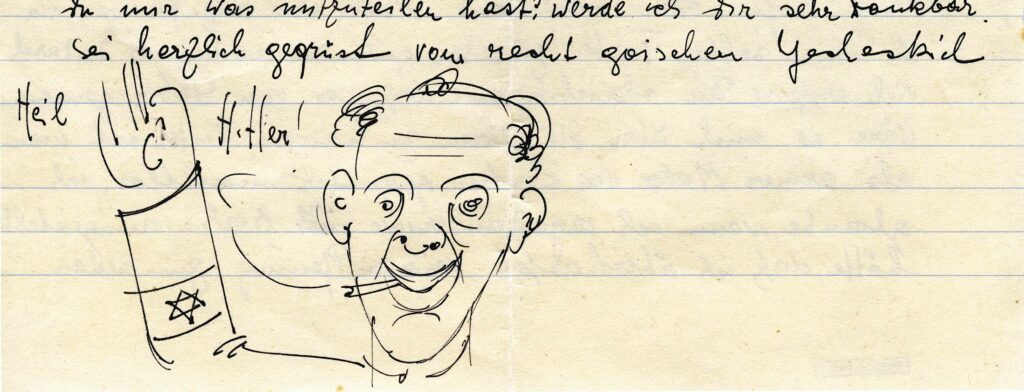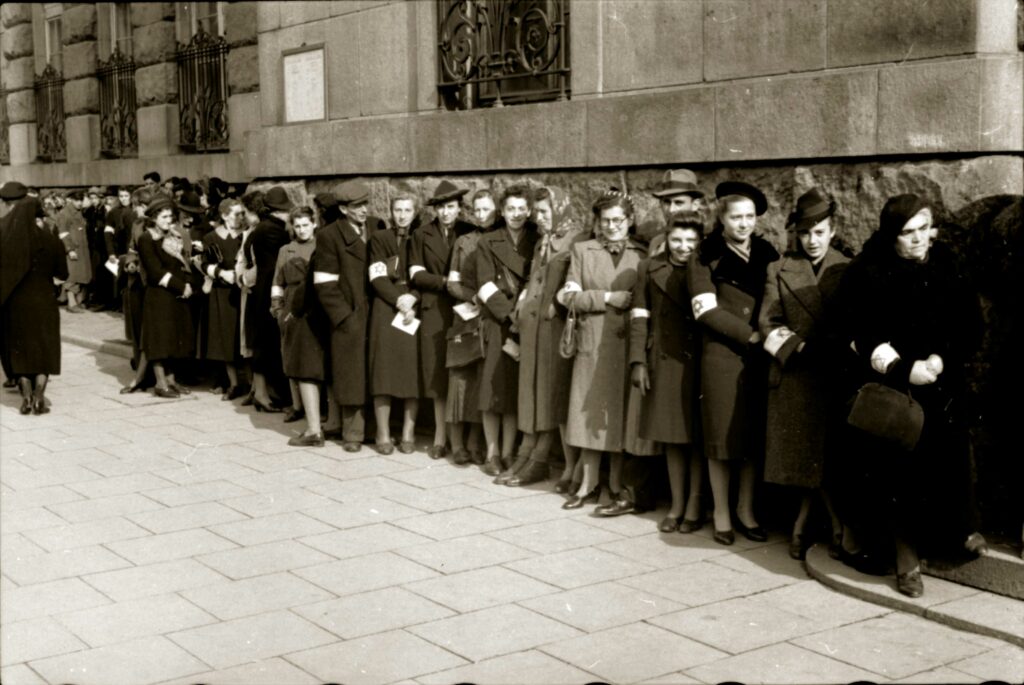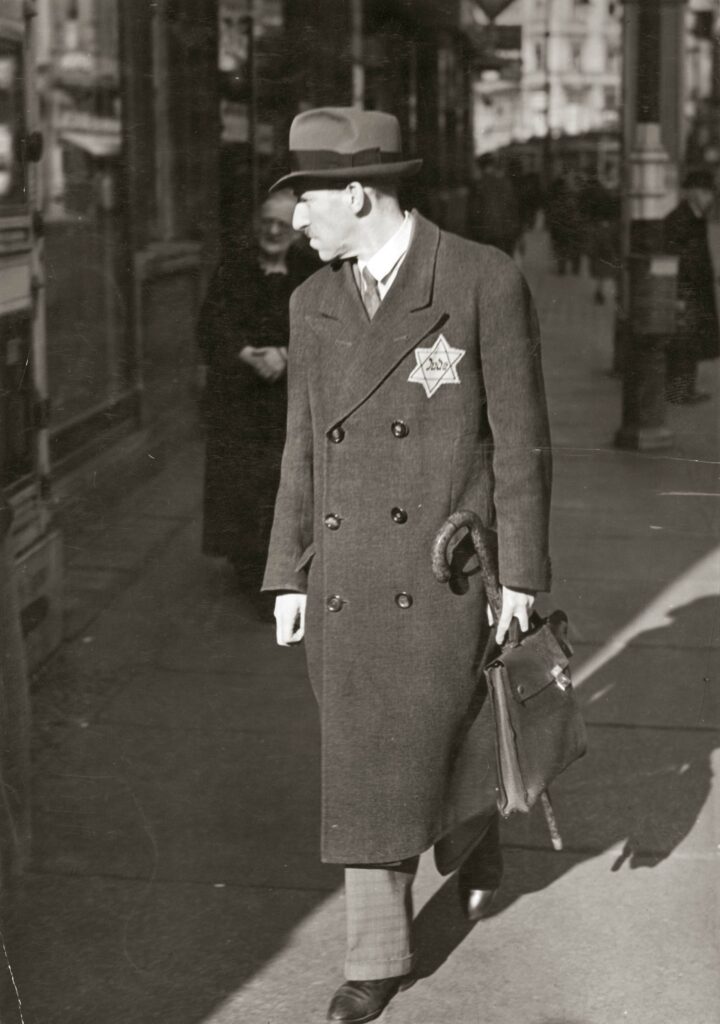The Star of David
In letters to his friend Paul Citroen (1896–1983), with whom he studied at the Bauhaus, Kirszenbaum often included caricatures which were unrelated to the subject of the letters.
The Star of David
In letters to his friend Paul Citroen (1896–1983), with whom he studied at the Bauhaus, Kirszenbaum often included caricatures which were unrelated to the subject of the letters.
For example, at the end of a letter dated January 18, 1932, there is a self-portrait in which Kirszenbaum casually imitates the so-called Hitler salute with a cigarette in the corner of his mouth, mocking the Nazis. However, he does not wear a swastika armband like the Nazis, but proudly displays one with a Star of David, such as the Zionists used from the end of the 19th century as a political symbol for the goal of founding their own Jewish State.
Karikatur: “Heil Hitler!”
Probably in a reference to the caricature, Kirszenbaum ironically calls himself a “quite goischen [= unJewish] Jecheskiel” in his greeting to Citroen.
The “Shield of David” (Hebrew: מגןדוד Magen David) with its two inextricably intertwined triangles symbolizes the bond between Jews with God. The Star of David became the emblem of the flag of Israel on May 14, 1948, when the state was founded.
Kirszenbaum probably never would have imagined in 1932 that all Jews in Poland would be forced to wear a white armband with the Star of David on it after the conquest of Poland by the Wehrmacht in 1939.
On September 1, 1941, the Police Ordinance on the Identification of Jews declared that people above the age of six defined as Jews according to the Nuremberg Race Laws of 1935 had to wear a yellow Star of David “visibly sewn on the left breast side of the garment near the heart.”
»Kennzeichnung als Juden«. In: Enzyklopädie des Holocaust. Israel Gutmann / Eberhard Jäckel/Peter Longerich (Hg.). Bd. 2, München 1998, S. 750 f.
Lion Feuchtwanger (Hg.): Der gelbe Fleck. Zusammenstellung von Zeitungsartikeln, Augenzeugenberichten, Karikaturen und Gesetzestexten zur Verfolgung der Juden in Deutschland. Paris 1936.
Peter Longerich: »Davon haben wir nichts gewusst!« Die Deutschen und die Judenverfolgung 1933–1945. München 2006.
Ingo Loose: Polen. Die eingegliederten Gebiete August 1941–1945 (= Die Verfolgung und Ermordung der europäischen Juden durch das nationalsozialistische Deutschland 1933–1945, Bd. 10). Berlin 2020.
Michael Mayer: Staaten als Täter: Ministerialbürokratie und »Judenpolitik« in NS-Deutschland und Vichy-Frankreich. Ein Vergleich. München 2010.
Claudia Prinz: Der »Gelbe Stern«. Lebendiges Museum Online – Deutsches Historisches Museum. Berlin 2015.
Online: https://www.dhm.de/lemo/kapitel/der-zweite-weltkrieg/voelkermord/gelber-stern.html
Jens J. Scheiner: Vom »Gelben Flicken« zum »Judenstern«? Genese und Applikation von Judenabzeichen im Islam und christlichen Europa (841–1941). Frankfurt a. M. 2004.
Joseph Walk (Hg.): Das Sonderrecht für die Juden im NS-Staat. 2. Aufl. Heidelberg 1996.



